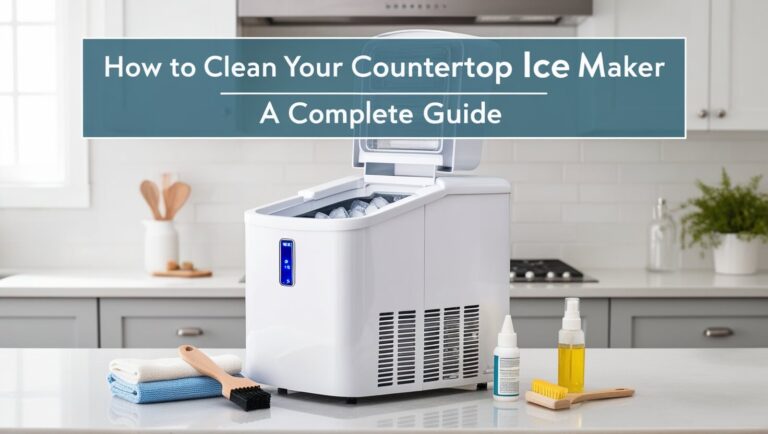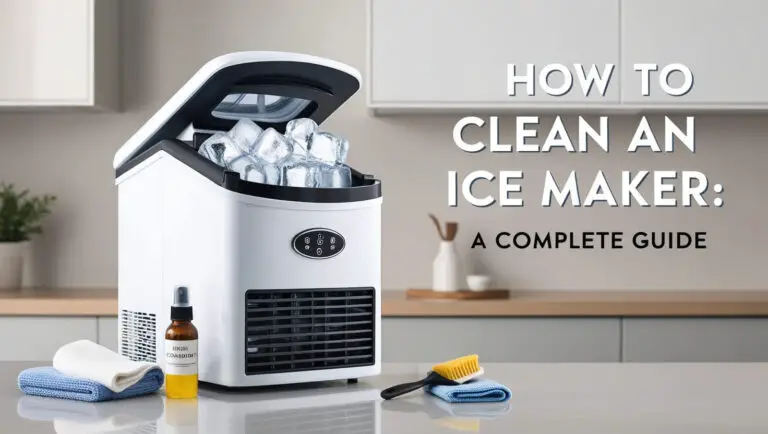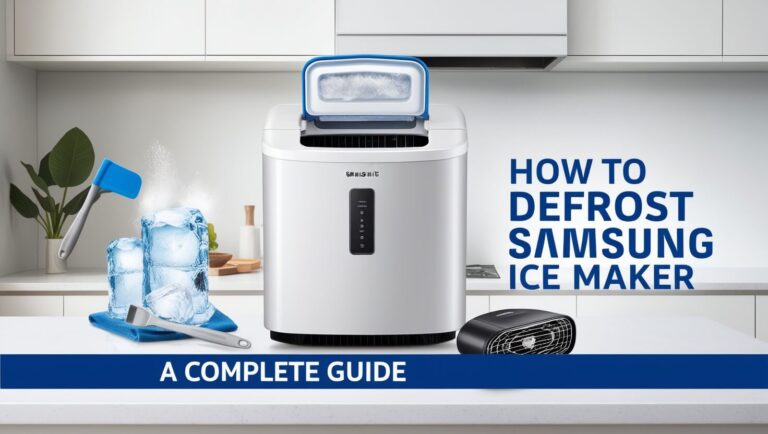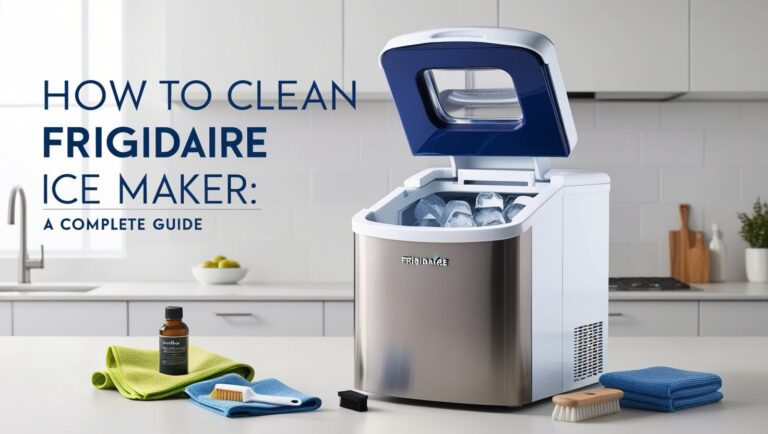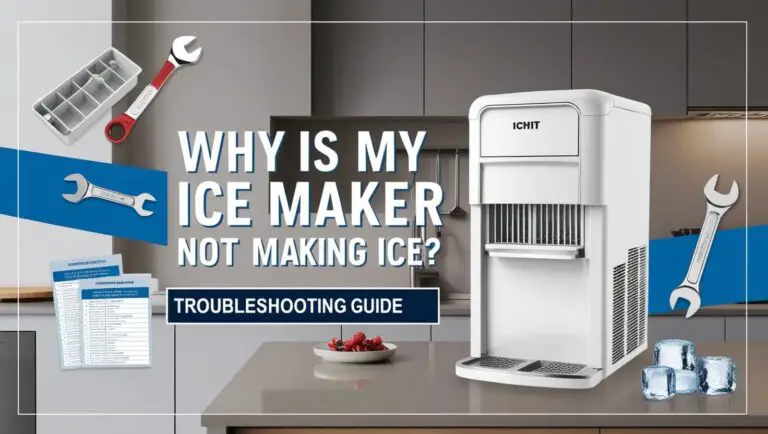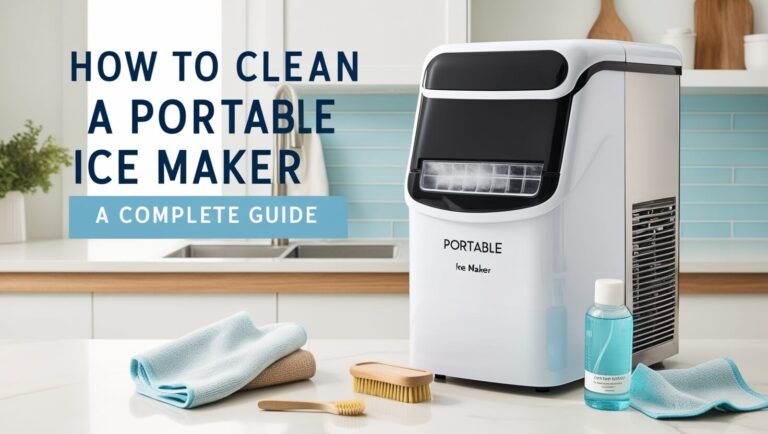How Does an Ice Maker Work? A Comprehensive Guide
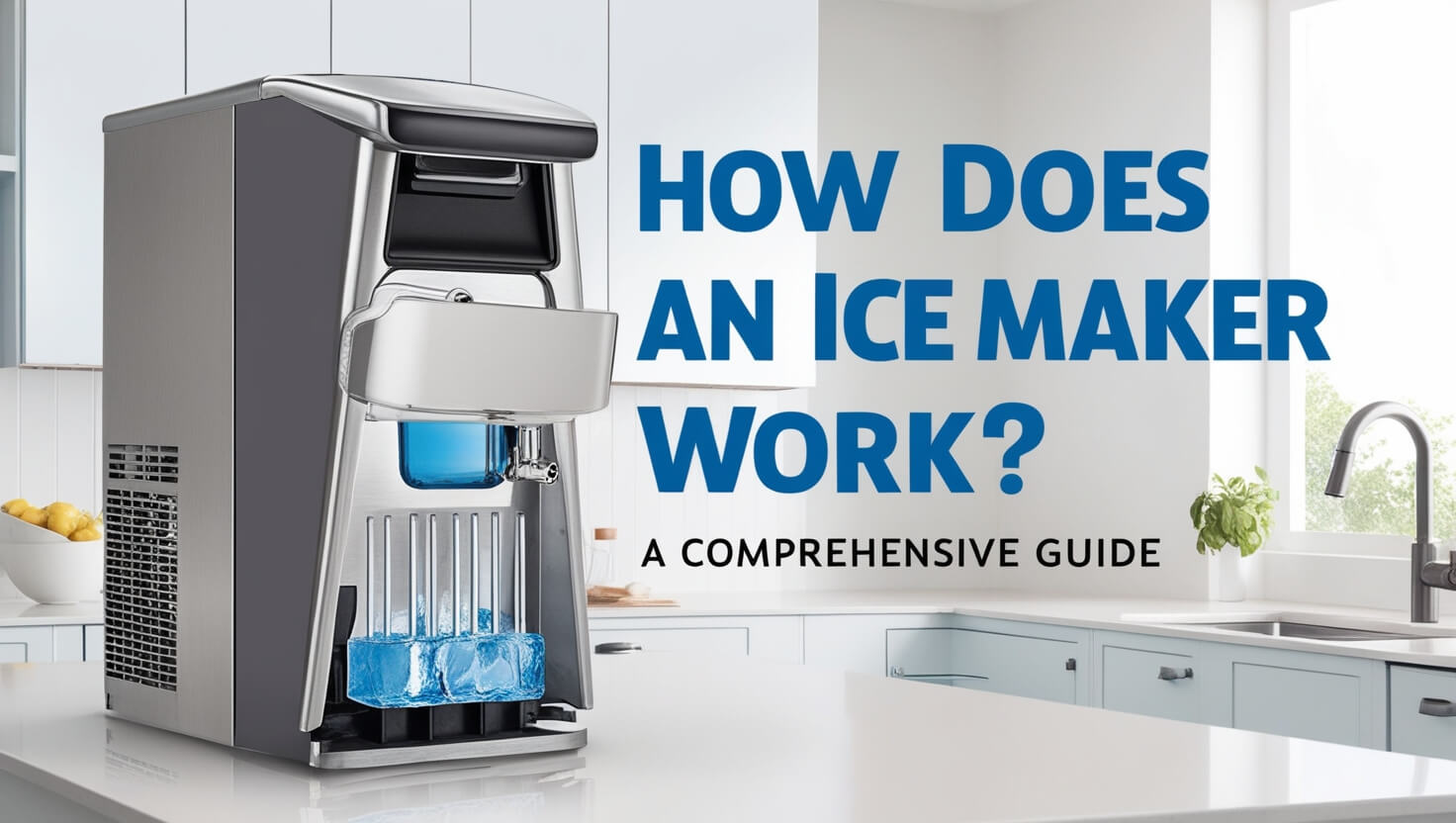
Ice makers have become an essential appliance in many homes and businesses, providing a convenient supply of ice for cooling drinks and preserving food. But have you ever wondered how these machines actually work?
In this comprehensive guide, we’ll explore the inner workings of ice makers, from the basic principles to the intricate mechanisms that transform water into ice. We’ll also cover different types of ice makers, troubleshooting common issues, and tips for maintaining your ice maker for optimal performance.
The Evolution of Ice Making
Before we dive into the mechanics of modern ice makers, let’s take a brief look at how ice production has evolved over time.
Early Ice Harvesting Methods
In the past, people relied on natural ice sources like frozen lakes and ponds. Ice harvesting was a labor-intensive process that involved cutting large blocks of ice during winter months and storing them in insulated ice houses for use throughout the year.
The Birth of Artificial Refrigeration
The development of artificial refrigeration in the 19th century revolutionized ice production. In 1805, American inventor Oliver Evans designed the first refrigeration machine, laying the groundwork for future innovations.
Development of the Modern Ice Maker
The first patent for an ice maker was granted to John Gorrie in 1851. However, it wasn’t until the mid-20th century that ice makers became common household appliances. Servel introduced the first automatic ice maker for home freezers around 1953, marking the beginning of convenient ice production in residential settings.
Types of Ice Makers
Ice makers come in various forms, each designed to meet specific needs and preferences. Let’s explore the main types of ice makers available today.
Freezer Ice Makers
These are the most common type of ice makers found in home refrigerators. They’re typically located in the freezer compartment and produce crescent-shaped or cube ice.
Portable Ice Makers
Portable ice makers are compact units that can be placed on a countertop. They’re ideal for small spaces or occasional use, producing ice quickly without requiring a permanent water connection.
Built-in and Freestanding Ice Makers
These larger units are designed for more substantial ice production. Built-in models can be integrated into kitchen cabinetry, while freestanding units can be placed anywhere with access to water and electricity.
Commercial Ice Machines
Commercial ice makers are high-capacity units used in restaurants, hotels, and other businesses that require large amounts of ice. They can produce various types of ice, including cubes, flakes, and nuggets.
The Basic Principles of Ice Making
To understand how an ice maker works, it’s essential to grasp the fundamental principles of refrigeration. All ice makers rely on the refrigeration cycle to cool water and form ice.
The Refrigeration Cycle Explained
The refrigeration cycle involves four main steps:
- Compression: A compressor raises the pressure and temperature of the refrigerant gas.
- Condensation: The hot, high-pressure gas is cooled and condensed into a liquid in the condenser.
- Expansion: The liquid refrigerant passes through an expansion valve, reducing its pressure and temperature.
- Evaporation: The cold, low-pressure refrigerant absorbs heat from the surrounding area (in this case, the water), causing it to evaporate back into a gas.
This cycle repeats continuously, removing heat from the water until it freezes into ice.
Key Components of an Ice Maker
An ice maker consists of several crucial components that work together to produce ice:
1. Compressor
The compressor is the heart of the refrigeration system. It compresses the refrigerant gas, increasing its temperature and pressure.
2. Condenser
The condenser is where the hot, high-pressure refrigerant gas releases heat and condenses into a liquid. In air-cooled ice makers, a fan blows air over the condenser coils to facilitate this process.
3. Evaporator
The evaporator is where the actual ice formation occurs. It’s typically a metal plate or grid that gets extremely cold as the refrigerant absorbs heat from the surrounding water.
4. Expansion Valve
This valve controls the flow of refrigerant into the evaporator, reducing its pressure and temperature in the process.
Step-by-Step Process: How an Ice Maker Creates Ice
Now that we understand the basic components and principles, let’s walk through the step-by-step process of how an ice maker works.
Water Intake
The ice-making cycle begins when water enters the ice maker. In most home freezer ice makers, this happens when a timer activates a water inlet valve, allowing a specific amount of water to flow into the ice mold.
Freezing Process
Once the mold is filled with water, the refrigeration cycle begins. The evaporator, which is in contact with the ice mold, becomes extremely cold. As the water in the mold loses heat to the evaporator, it starts to freeze.
Ice Release Mechanism
When the ice is fully formed, the ice maker needs to release it from the mold. This is typically done in one of two ways:
- Heating element: A brief burst of heat slightly melts the surface of the ice, allowing it to slide out of the mold.
- Flexible mold: Some ice makers use a flexible plastic mold that can be twisted to release the ice.
Ice Collection
Once released from the mold, the ice cubes are pushed or scooped into a collection bin. In freezer ice makers, this is often done by a rotating arm that sweeps the ice into the bin.
Different Ice Shapes and Their Formation
Ice makers can produce various shapes of ice, each with its own formation process and characteristics.
Crescent Ice
Crescent-shaped ice is common in many home freezer ice makers. It’s formed in a curved mold and is popular for its ability to easily slide into glasses.
Cube Ice
Cube ice is produced by many commercial and high-end residential ice makers. The water freezes in cube-shaped compartments, resulting in uniform, square ice pieces.
Nugget Ice
Also known as sonic ice or pellet ice, nugget ice is made by scraping ice flakes off a freezing cylinder and compressing them into small, chewable nuggets.
Flake Ice
Flake ice is thin and crisp, often used in food displays and medical applications. It’s made by freezing a thin layer of water on a cold cylinder and scraping it off with a rotating blade.
The Role of Sensors and Controls in Ice Makers
Modern ice makers rely on various sensors and controls to ensure efficient and consistent ice production.
Thermostat Function
A thermostat monitors the temperature in the ice-making compartment. It signals the system to start or stop the freezing cycle based on the desired temperature.
Water Level Sensors
These sensors ensure that the correct amount of water is added to the ice mold. They help prevent overfilling or underfilling, which can affect ice quality and machine performance.
Ice Level Detection
Most ice makers have a mechanism to detect when the ice bin is full. This is often a mechanical arm that rises as the ice level increases, shutting off the ice maker when it reaches a certain height.
Energy Efficiency in Ice Makers
As with all appliances, energy efficiency is an important consideration for ice makers.
Energy-Saving Features
Many modern ice makers include features designed to reduce energy consumption, such as:
- Improved insulation to maintain cold temperatures
- More efficient compressors and motors
- Automatic shut-off when the ice bin is full
ENERGY STAR Certification
Look for ice makers with ENERGY STAR certification, which indicates that the appliance meets strict energy efficiency guidelines set by the U.S. Environmental Protection Agency and the Department of Energy.
Tips for Reducing Ice Maker Energy Consumption
To minimize your ice maker’s energy use:
- Keep the ice maker clean and well-maintained
- Ensure proper ventilation around the unit
- Avoid placing the ice maker near heat sources
- Use the ice maker’s energy-saving modes if available
Common Ice Maker Problems and Troubleshooting
Even well-maintained ice makers can sometimes encounter issues. Here are some common problems and troubleshooting tips:
Ice Production Issues
If your ice maker isn’t producing ice or is producing less than usual, check:
- Water supply: Ensure the water line isn’t kinked or frozen
- Water pressure: Low water pressure can affect ice production
- Thermostat settings: Make sure the freezer temperature is cold enough
Ice Quality Concerns
For issues with ice taste, smell, or appearance:
- Clean the ice maker and bin thoroughly
- Check your water quality and consider using a water filter
- Ensure the freezer temperature is set correctly
Noise Problems
Unusual noises could indicate:
- Loose components: Tighten any loose screws or parts
- Fan issues: Check for obstructions in the fan
- Compressor problems: If the compressor is noisy, it may need professional attention
Water Leaks
If you notice water leaking from your ice maker:
- Check for cracks in the water line or ice mold
- Ensure the unit is level
- Verify that the water inlet valve is functioning correctly
Maintaining Your Ice Maker
Regular maintenance is key to keeping your ice maker working efficiently and producing high-quality ice.
Cleaning Procedures
Clean your ice maker regularly:
- Empty and clean the ice bin
- Wipe down all surfaces with a mild detergent solution
- Sanitize the system with a mixture of water and vinegar or a commercial ice maker cleaner
Descaling Methods
In areas with hard water, mineral buildup can affect ice maker performance. Descale your ice maker periodically using:
- A commercial descaling solution
- A mixture of water and citric acid
Filter Replacement
If your ice maker has a water filter, replace it according to the manufacturer’s recommendations, typically every 6 months.
Professional Maintenance Tips
Consider having your ice maker professionally serviced annually, especially for built-in or commercial units. A technician can:
- Check and clean internal components
- Ensure proper refrigerant levels
- Calibrate controls and sensors
Innovations in Ice Maker Technology
Ice maker technology continues to evolve, with new features and improvements enhancing performance and convenience.
Smart Ice Makers
Some modern ice makers include smart features such as:
- Wi-Fi connectivity for remote monitoring and control
- Smartphone apps for adjusting settings and receiving maintenance alerts
- Integration with smart home systems
Eco-Friendly Refrigerants
Manufacturers are transitioning to more environmentally friendly refrigerants that have lower global warming potential.
Improved Ice Production Rates
Advancements in technology have led to ice makers that can produce ice faster and more efficiently than ever before.
Choosing the Right Ice Maker for Your Needs
When selecting an ice maker, consider the following factors:
Factors to Consider
- Ice production capacity
- Type of ice produced
- Available space
- Water and power requirements
- Budget
Residential vs. Commercial Ice Makers
Residential ice makers are designed for home use and typically have lower production capacities. Commercial ice makers are built for high-volume ice production and may offer more ice shape options.
Ice Production Capacity Considerations
Estimate your daily ice needs to choose an ice maker with appropriate capacity. Consider peak usage times and any special events that might require extra ice.
The Impact of Water Quality on Ice Making
The quality of water used in your ice maker can significantly affect the taste, appearance, and overall quality of the ice produced.
Hard Water Effects
Hard water can lead to mineral buildup in your ice maker, affecting its performance and potentially shortening its lifespan. It can also result in cloudy or off-tasting ice.
Importance of Filtration
Using a water filter can improve ice quality by:
- Removing impurities that affect taste and odor
- Reducing mineral content to prevent scale buildup
- Extending the life of your ice maker
Taste and Odor Considerations
For the best-tasting ice:
- Use filtered water
- Keep the ice maker and bin clean
- Store ice in a sealed container to prevent odor absorption
Ice Makers in Various Settings
Ice makers play crucial roles in different environments, each with its own specific needs and challenges.
Home Use
Residential ice makers provide convenience for everyday use and entertaining. They’re typically smaller and designed for lower volume production.
Restaurants and Bars
Commercial establishments require high-capacity ice makers that can produce large quantities of ice quickly. Different types of ice may be needed for various drinks and food presentation.
Hotels and Hospitality
Hotels need reliable ice production for guest use and food service operations. Many hotels have multiple ice makers located on different floors for guest convenience.
Healthcare Facilities
Hospitals and clinics often use specialized ice makers that produce sterile ice for medical purposes, such as reducing swelling or keeping medications cool.
The Future of Ice Making Technology
As technology advances, we can expect to see continued improvements in ice maker design and functionality.
Emerging Trends
Some trends to watch for include:
- More energy-efficient designs
- Increased use of smart technology and connectivity
- Development of new ice shapes for specific applications
Potential Advancements
Future ice makers might incorporate:
- Self-cleaning technologies
- Advanced water purification systems
- Customizable ice shapes and sizes
Final Thoughts
Ice makers have come a long way since the days of harvesting natural ice. Today, these appliances use sophisticated refrigeration technology to provide a constant supply of ice for various needs. Understanding how an ice maker works can help you choose the right model for your needs, troubleshoot common issues, and maintain your ice maker for optimal performance.
From the basic freezer ice maker in your home to large commercial units in restaurants and hotels, the fundamental principles of ice making remain the same. As technology continues to advance, we can look forward to even more efficient, convenient, and innovative ice makers in the future.
Whether you’re enjoying a cold drink on a hot day or using ice for food preservation, take a moment to appreciate the ingenious technology that makes it all possible. The next time you hear your ice maker humming away, you’ll know exactly what’s happening inside to create those perfect ice cubes.

